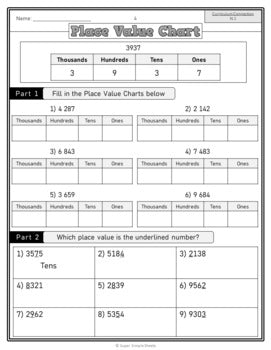BC Grade 4 Full Year Bundle - Math - GOOGLE AND PDF
BC Grade 4 Full Year Bundle - Math - GOOGLE AND PDF
Interested in a bundle? Shop below instead!
Couldn't load pickup availability
PRODUCT PREVIEW
Distance Learning made easy! GOOGLE CLASSROOM VERSION - PDF INCLUDED! This gives you the ability to print worksheets as well as distribute a digital copy of the resource to your students on Google Classroom.
Grade 4 – British Columbia Math Curriculum – This resource covers all elaborations in the Grade 4 – British Columbia (BC) Redesigned Math Curriculum. There are 920 activity sheets for your students to learn and practice the elaborations in the curriculum. Using this resource will ensure that your students will be learning the new redesigned BC curriculum.
Numbers-
Concepts that are covered:
- Composing and decomposing whole numbers to 10 000
- Using base ten blocks to represent numbers
- Counting money as base ten reinforcement ($100, $10, $1)
- Counting to 10,000 by 200, 250, and 500
- Comparing and ordering numbers to 10 000
- Number line addition, subtraction, multiplication, division
- Addition and subtracting using numbers to 10 000
- Fact Families – Relationship between multiplication and division
- Multiplication and division facts – 1 through 10
- Addition mental math strategies (adding in chunks, counting on, doubling, and more)
- Subtraction mental math strategies (adding up, counting back, subtracting in chunks)
- Multiplication mental math strategies (skip counting, doubling and halving)
- Division mental math strategies (skip counting, splitting up the dividend)
- Standard algorithms – addition, subtraction, multiplication, division
- Multiplication using 2 and 3 digits by 1
- Division using 1-digit divisors and up to 3-digit dividends
- Estimating and solving addition and subtraction
- Arrays – Multiplication and Division
- Naming fractions as parts of a whole
- Comparing and ordering fractions
- Comparing, ordering and adding decimals to the hundredths
- Understanding the relationship between fractions and decimals
- Adding and subtracting decimals to the hundredths
- 3 Unit Tests – Place Value, Numbers, Operations
Patterns and Equations-
Some of the concepts that are covered:
- Creating patterns using squares
- Extending patterns using blocks
- Determining the pattern rule in various types of patterns (growing, shrinking, number, pictorial)
- Patterns involving life expectancy trends
- Patterns related to fish populations in the Fraser River
- Addition growing patterns
- Part Part Whole questions
- Decimal number patterns
- Subtraction shrinking patterns
- T-Tables (input/output tables)
- Translating pictorial patterns and word problems into t-tables and charts to solve problems
- Determining missing values in a pattern using all four operations (addition, subtraction, multiplication, and division)
- Using t-tables to solve word problems
- Graphing patterns to determine trends and pattern rules
- Solving equations that have missing values
- Writing equations that represent a word problem
- Division bar model – fair sharing word problems
- Using symbols (variables) to represent a missing value
Geometry and Measurement-
Some of the concepts that are covered:
- Reading digital clocks
- Reading analog clocks and 24-hour clocks
- Converting 12-hour time and 24-hour time
- Understanding the concept of a.m. and p.m.
- Telling time using fractions – quarter to/after and half past
- Polygons vs non-polygons
- Regular and Irregular polygons
- Angles in regular and irregular polygons
- Perpendicular, intersecting and parallel lines in polygons
- Yup’ik border patterns – creating tessellations using regular polygons
- Tangram puzzles – using tangrams to create pictures
- Using formulas to calculate perimeter of regular and irregular shapes
- Measuring polygons to determine the perimeter
- Understanding congruency
- Identifying lines of symmetry in 2-D shapes
- Creating symmetrical 2-D shapes
- Drawing lines of symmetry in 2-D shapes
- First Peoples art and line symmetry
- Drawing mirror images of First Peoples art
- 2 Unit tests
Graphing and Probability-
Some of the concepts that are covered:
- Compare graphs that use one-to-one and many-to-one correspondence
- Read and interpret pictographs
- Answer questions and draw conclusions about pictographs
- Collect data for the purpose of a pictograph
- Construct pictographs using proper labels
- Read and interpret bar graphs
- Understand how scale affects the look of a bar graph
- Answer questions and draw conclusions about bar graphs
- Collect data for the purpose of a bar graph
- Construct bar graphs using proper labels
- How line breaks are used to change the look of a bar graph
- Describing probability using the following terms – impossible, certain, and possible
- Describing probability – equally likely, more likely, and less likely
- Describing the probability of experiments
- Describing the probability of events from a student’s life
- 2 Unit Tests (Graphing and Probability)
Financial Literacy-
Some of the concepts that are covered:
- Needs vs Wants
- Spending and Saving
- Introduction to Investing
- Investment Plan – Assignment
- Donating
- Consumerism – Need vs Want
- Consumerism – Need vs Want – Questions
- Counting Dollars
- Counting Dollars
- Counting Cents
- Counting Cents
- Converting Cents to Dollars
- Counting Canadian Coins
- Counting Canadian Coins
- Making Change
- Counting Money (Adding Money Totals)
- Calculating Change
- Giving Change Using Coins
- Adding Money Amounts
- Adding Multiple Items
- Providing Change to Customers
- Money Word Problems
- Determining a Good Purchase
- Financial Literacy Unit Test
***Answer Pages for all worksheets are included
Share






A great resource and saves me a ton of time planning!









